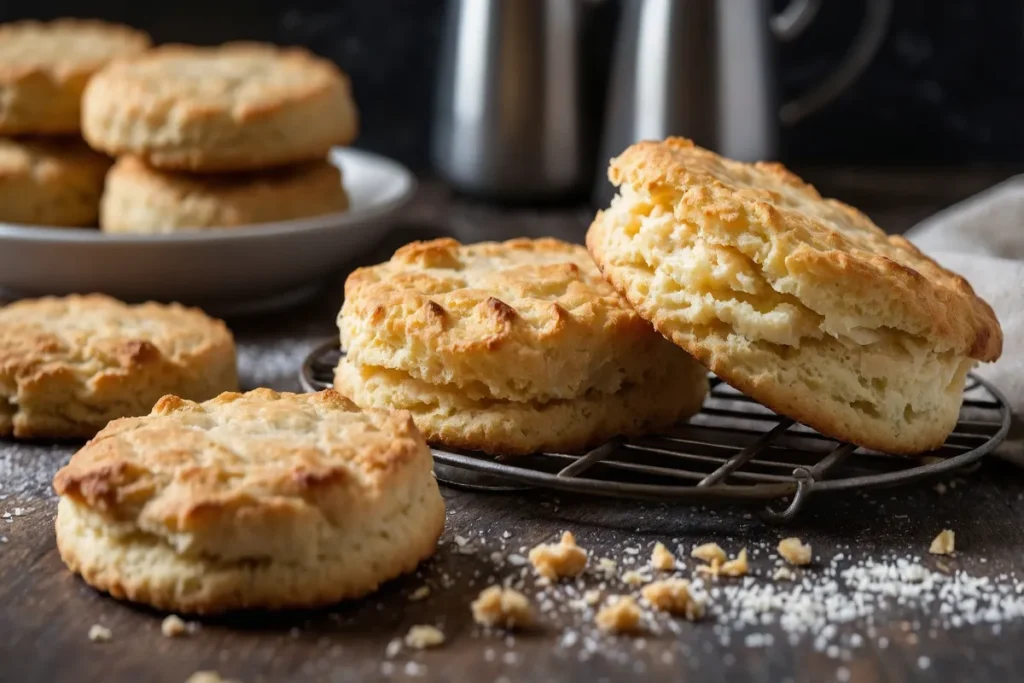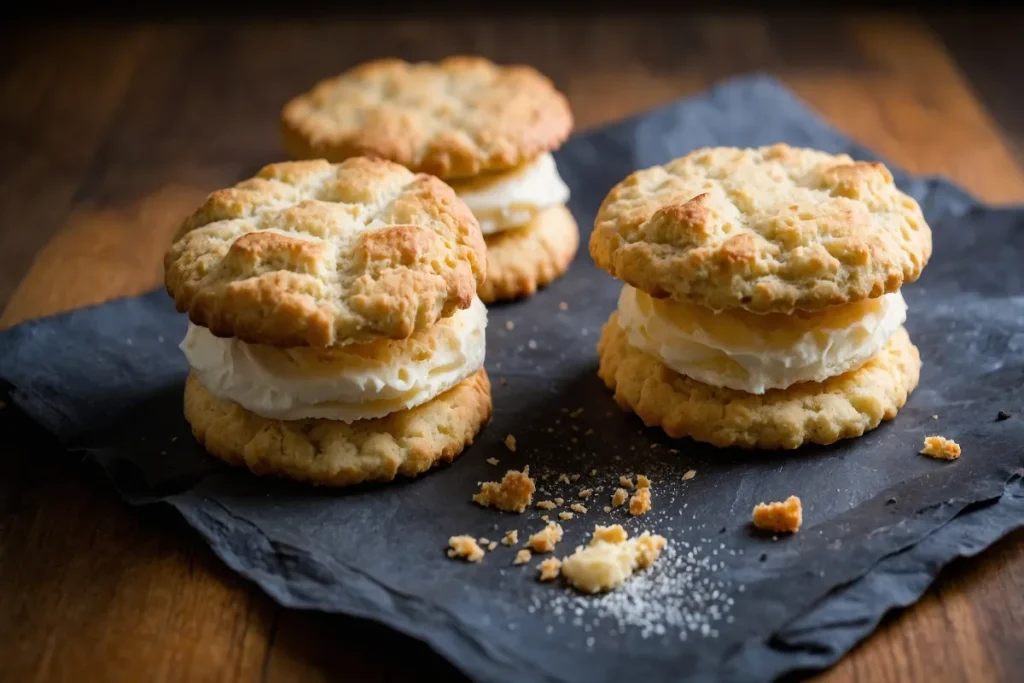If you’re on the hunt for a recipe that yields airy, tender, and scrumptious gluten-free biscuits, you’ve come to the right place. This gluten-free biscuits recipe is perfect for breakfast, brunch, or as a side for any meal. These biscuits are soft on the inside, golden on the outside, and have that classic, comforting taste you crave—minus the gluten.
Why Make Gluten-Free Biscuits?
Whether you have celiac disease, gluten sensitivity, or simply prefer gluten-free options, finding a good gluten-free biscuit recipe can be challenging. Many gluten-free baked goods end up too dense or crumbly. However, this recipe incorporates the right blend of gluten-free flours and techniques to create gluten-free biscuits that closely resemble traditional, wheat-based versions. To learn more about gluten-free baking techniques, click here.
Ingredients for Gluten-Free Biscuits
To create these gluten-free biscuits, you’ll need the following ingredients:
Dry Ingredients:
- 2 cups gluten-free all-purpose flour blend (with xanthan gum)
- 1 tablespoon baking powder
- 1/2 teaspoon baking soda
- 1 teaspoon salt
- 1 tablespoon sugar (optional)
Wet Ingredients:
- 1/2 cup unsalted butter, cold and cubed
- 3/4 cup buttermilk, cold (or dairy-free alternative like almond milk + 1 tablespoon lemon juice)
- 1 large egg
Step-by-Step Instructions for Making Gluten-Free Biscuits

Step 1: Prepare Your Ingredients
- First, preheat your oven to 425°F (220°C) and line a baking sheet with parchment paper.
- Measure out all ingredients carefully, as gluten-free baking requires precise measurements for the best results.
Step 2: Mix the Dry Ingredients
- In a large mixing bowl, whisk together the gluten-free flour blend, baking powder, baking soda, salt, and sugar (if using). Ensure the dry ingredients are evenly combined for a consistent dough.
Step 3: Cut in the Butter
- Add the cold, cubed butter into the flour mixture.
- Using a pastry cutter, fork, or your fingers, cut the butter into the flour until the mixture resembles coarse crumbs, with pea-sized pieces of butter distributed throughout.
Step 4: Add the Wet Ingredients
- In a separate bowl, whisk together the cold buttermilk and egg.
- Make a well in the center of the dry ingredients, then pour in the wet mixture.
- Gently stir with a wooden spoon or spatula until the dough just comes together. It’s fine if the dough is slightly sticky and shaggy; avoid overmixing to keep the biscuits tender.
Shaping and Baking Your Gluten-Free Biscuits
Step 5: Shape and Cut the Biscuits
- Lightly flour a clean surface with gluten-free flour. Turn the dough out onto the surface and gently pat it into a rectangle about 1-inch thick.
- To create layers in the gluten-free biscuits, fold the dough over itself in thirds, similar to folding a letter.
- Pat the dough out again to a 1-inch thickness, then use a round biscuit cutter (2.5-inch diameter) to cut out biscuits. Press straight down without twisting to ensure even rising. Gather any scraps, gently press them together, and cut additional biscuits.
Step 6: Bake the Biscuits
- Arrange the biscuits on the prepared baking sheet, ensuring they are touching or nearly touching each other. This helps them rise higher.
- Before baking, brush the tops with a bit of melted butter or buttermilk for a golden finish.
- Bake in the preheated oven for 12-15 minutes, or until the tops are golden brown and the gluten-free biscuits are cooked through.
Step 7: Serve and Enjoy
- Allow the gluten-free biscuits to cool for a few minutes on a wire rack before serving. They’re best enjoyed warm with butter, honey, or your favorite jam.
Tips for the Perfect Gluten-Free Biscuits

- Flour Blend: The key to great gluten-free biscuits is using a high-quality all-purpose gluten-free flour blend that includes xanthan gum or another binder. If your blend doesn’t contain xanthan gum, add 1/2 teaspoon to the dry ingredients.
- Cold Ingredients: Keeping the butter and buttermilk cold ensures the biscuits are flaky. You can even chill your flour before starting.
- Buttermilk Substitute: If you don’t have buttermilk, mix 3/4 cup dairy-free milk with 1 tablespoon lemon juice or apple cider vinegar and let it sit for 5 minutes.
- Don’t Overwork the Dough: Gluten-free dough can become tough if overhandled, so mix just until combined.
- Layering Technique: Folding the dough creates layers that mimic traditional biscuits. Therefore, don’t skip this step for the best texture.
Variations for Your Gluten-Free Biscuits
- Cheese Gluten-Free Biscuits: Add 1/2 cup shredded cheddar or parmesan to the dry ingredients before adding the wet ingredients.
- Herbed Gluten-Free Biscuits: Additionally, mix in 1 tablespoon of dried herbs like rosemary, thyme, or chives for a savory twist.
- Garlic Butter Gluten-Free Biscuits: Brush the tops with melted butter mixed with garlic powder and parsley after baking.
Troubleshooting Common Issues
- Dry Dough: If your dough is too dry, add a tablespoon of cold buttermilk at a time until it reaches the right consistency.
- Flat Biscuits: Ensure your baking powder and baking soda are fresh. Additionally, avoid twisting the biscuit cutter when cutting the dough.
- Crumbly Texture: This could be due to overworking the dough or using a poor-quality gluten-free flour blend. Make sure your blend includes xanthan gum or add it separately.
Storing and Reheating Gluten-Free Biscuits
- Storing: These gluten-free biscuits are best enjoyed fresh but can be stored in an airtight container at room temperature for up to 2 days.
- Freezing: If you want to prepare the biscuits in advance, freeze the unbaked gluten-free biscuits on a baking sheet until solid. Then, transfer them to a freezer bag for long-term storage. When you’re ready to bake, simply place the frozen biscuits on a baking sheet and add a few extra minutes to the baking time.
- Reheating: To reheat, simply warm the gluten-free biscuits in a 350°F (175°C) oven for 5-7 minutes or in the microwave for 15-20 seconds. This will restore their flaky texture and warm them up perfectly.
Nutritional Information (Per Serving)
- Calories: 190
- Fat: 9g
- Carbohydrates: 23g
- Fiber: 2g
- Protein: 3g
Conclusion
In conclusion, these gluten-free biscuits are proof that you don’t need gluten to enjoy a classic, flaky, and buttery biscuit. With the right ingredients and a few key techniques, you can easily make this comforting staple right at home. Serve them alongside your favorite meals, and they’ll quickly become a family favorite.
For more on gluten-free meal planning, visit this page.

